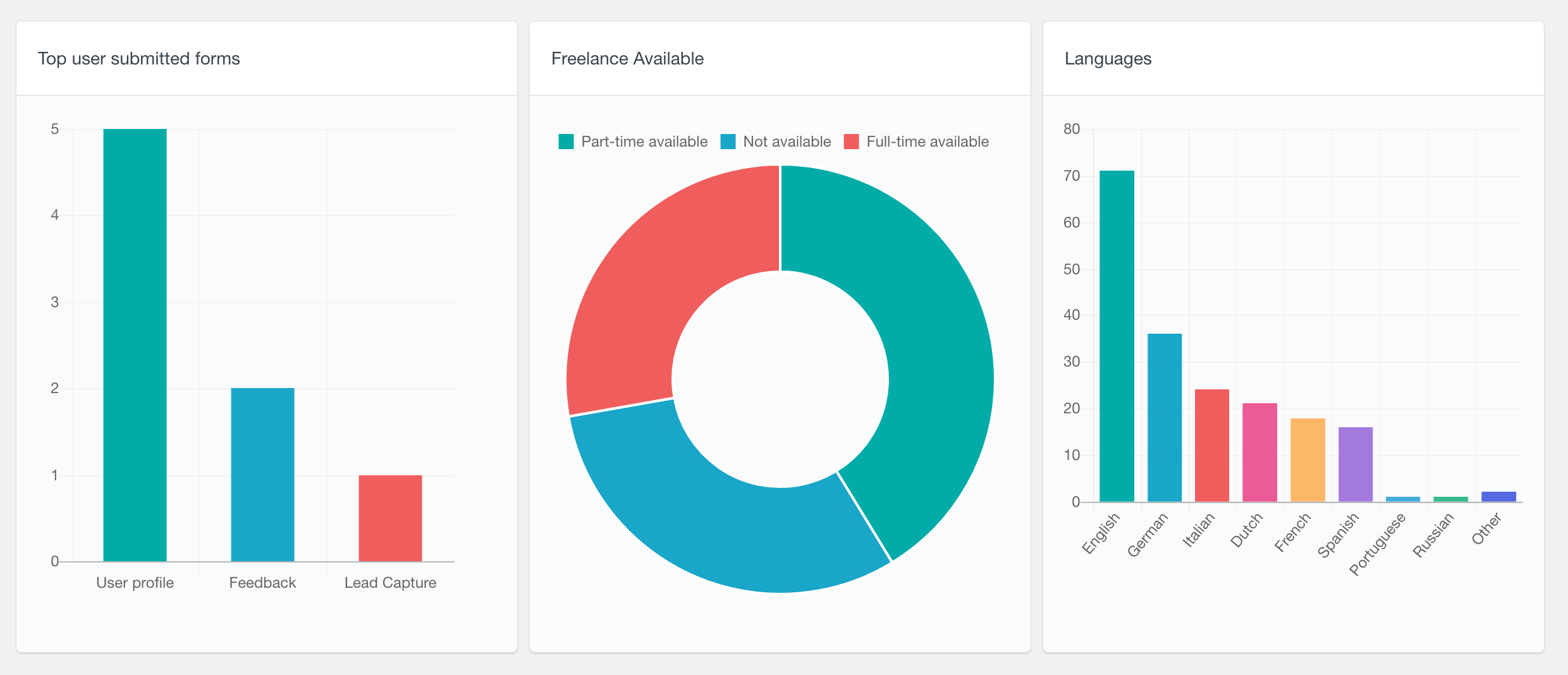Gravity Forms is one of the most popular form creation and management plugin for WordPress. The Gravity Forms plugin provides multiple options to build and publish WordPress forms that can be used for almost any kind of information submission from your website users (such as contact forms, surveys, polling etc.). The Gravity Forms module of the Users Insights plugin gives you the tools to analyze the Gravity Forms data, submitted by your WordPress users. The Gravity Forms support consists of two parts:
- Gravity Forms User Registration Add-on Support: Users Insights automatically detects the custom user meta fields and makes these fields available in the user table and filters.
- General Gravity Forms Support: Provides the tools to filter the WordPress users based on their form submissions. Also lists the submitted form entries for each user in the user profile section.
1. Gravity Forms User Registration Add-on Support
With the Gravity Forms User Registration Add-on you can create custom forms that can be used as user registration or user update forms. The user registration/update form can contain various fields – you can choose from all the available Gravity Forms fields.
The Gravity Forms module of Users Insights lists all the Gravity Forms user data on the user table and makes it available in the user filters. Users Insights detects all the registered custom user fields and since there are different types of fields available, it also makes sure to provide the corresponding filtering options for each field.
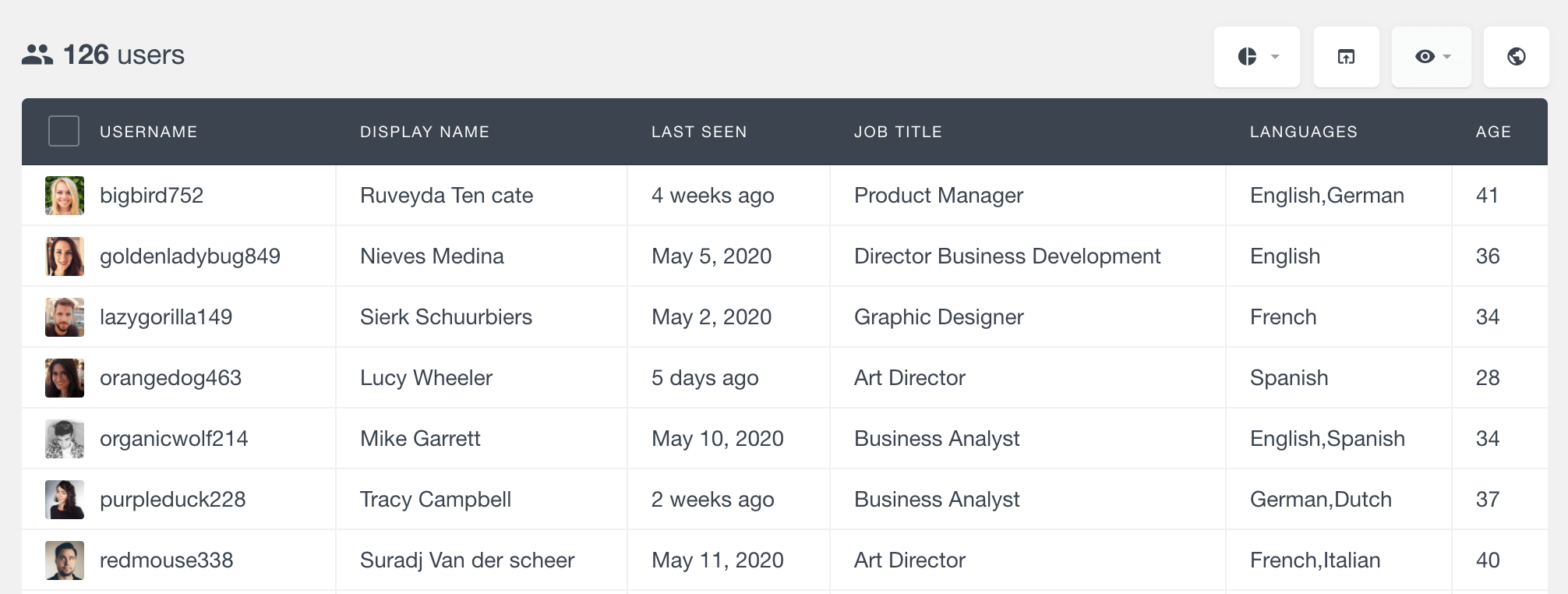
Drop down and radio button fields
The drop down and radio button fields allow the users to select one option from a predefined set of options.

For this type of fields, Users Insights automatically detects the available options and makes them available in the filters. In this way, when filtering the users by those fields, you can just choose from the list of available options instead of having to remember the exact names of the options.
Here is an example, where we have filtered the user list by the Degree that they have selected – we want to find all the users that have a Bachelor degree:
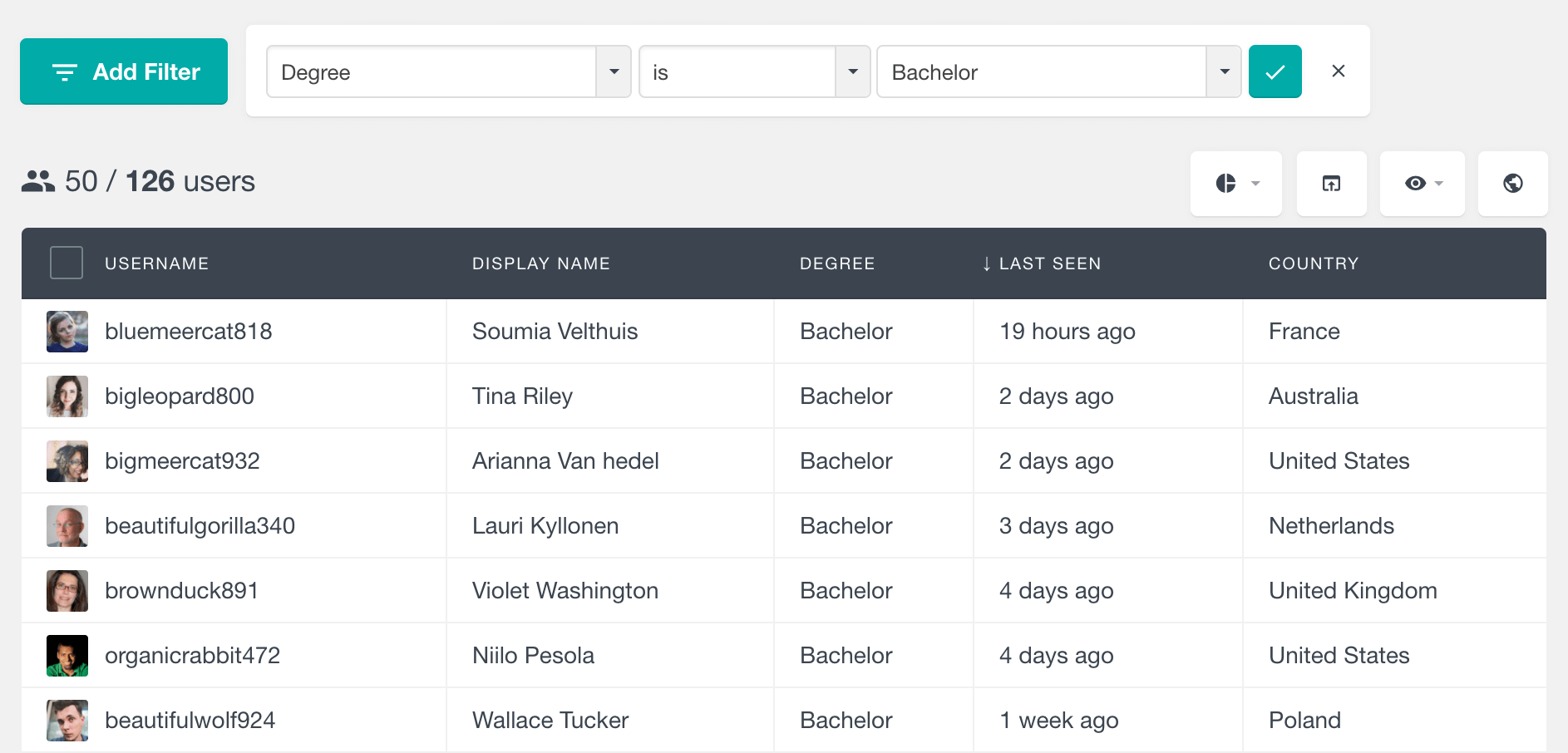
Checkboxes, Multi-Select and List fields
The Checkboxes and Multi-Select fields allow the users to select one more options from a predefined set of options. The List field allows the user to add a list of one or more items. The common between these three field types is that they can store one or more options per field.
The stored options are presented in a comma separated format on the Users Insights user table. You can also use filters like “contains” or “does not contain” to search the users that have selected a particular option. Here is an example where we search for the users who have Italian selected as a spoken language:
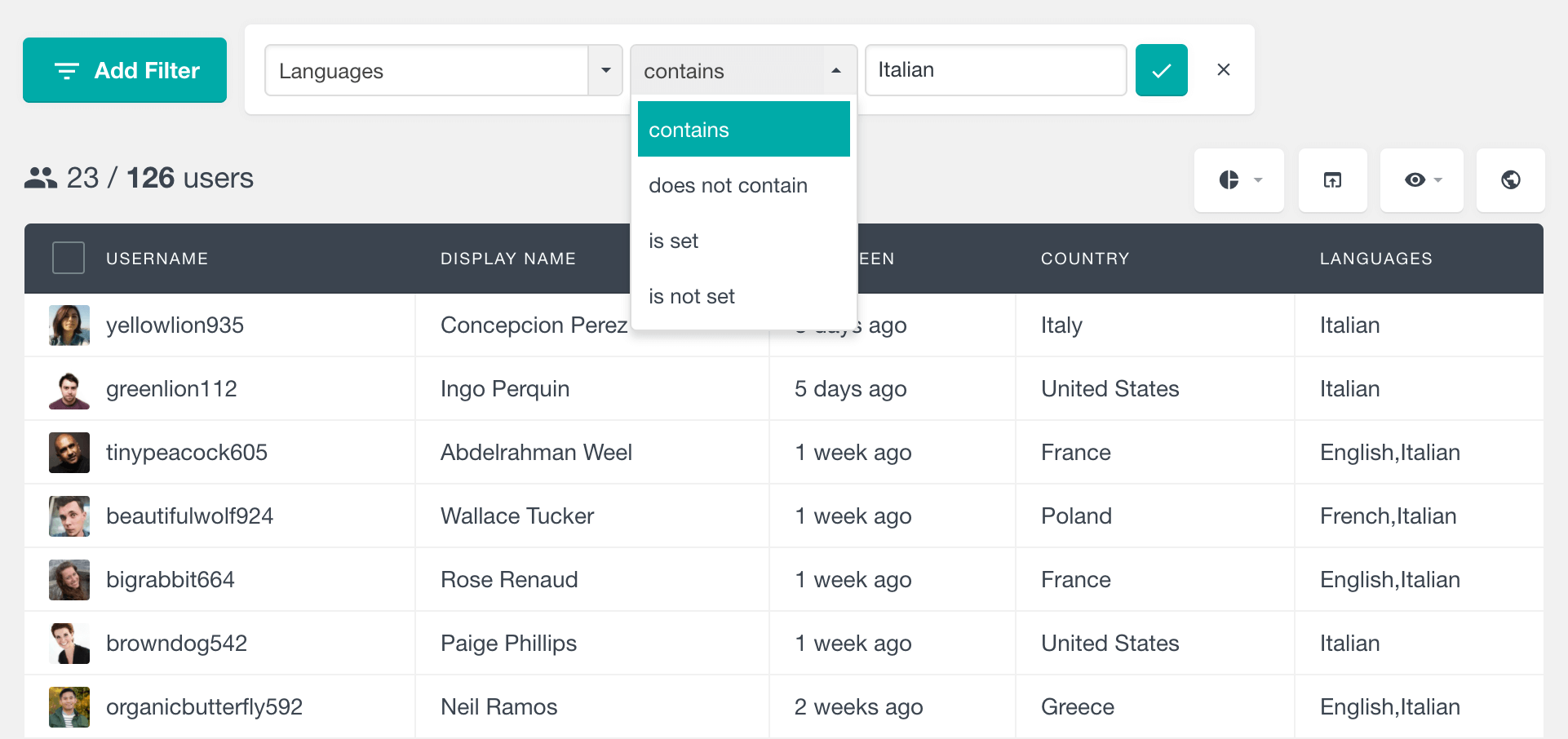
Numeric Fields
The Gravity Forms fields from numeric type are the standard Number field and also some of the Product fields, such as the Quantity field. When a numeric field is added to the table, Users Insights provides the corresponding numeric operators and sorting options for those fields. In this way, you can not only list values of those fields in the user table, but you can also apply various operators to find the users that fulfill a certain criteria. In the following example we have applied two filters to find the users whose age is in a selected range:
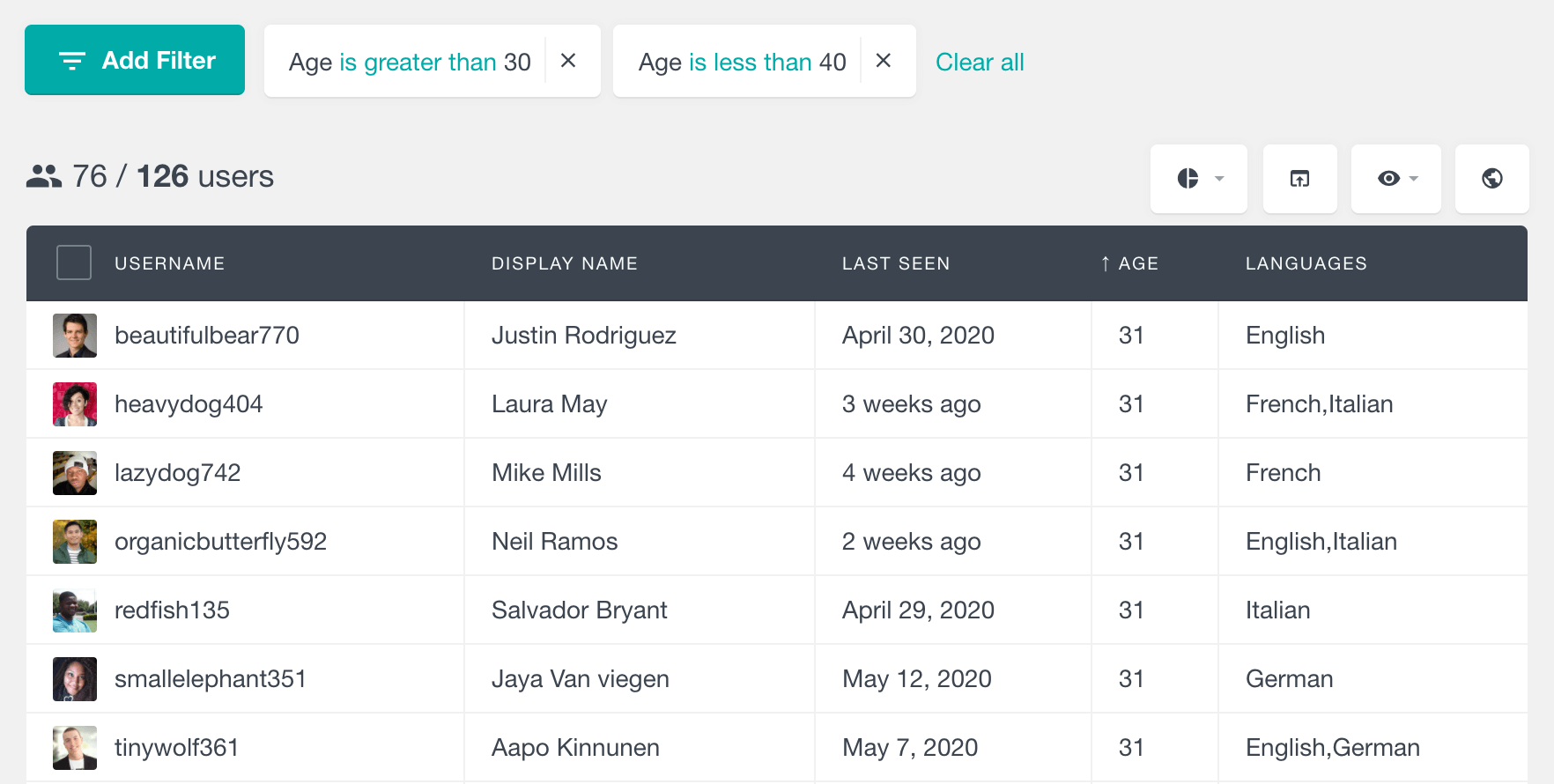
Date Fields
Users Insights also supports the Date field type, which means that when a Gravity Form user date field is detected and added to the table, you can sort the users based on this field in a chronological order. You can also apply various date filters based on those fields to narrow down your user selection. The values stored in the date fields are listed in the user table in a user friendly format – this is the format that you have chosen as standard date format for your WordPress install.
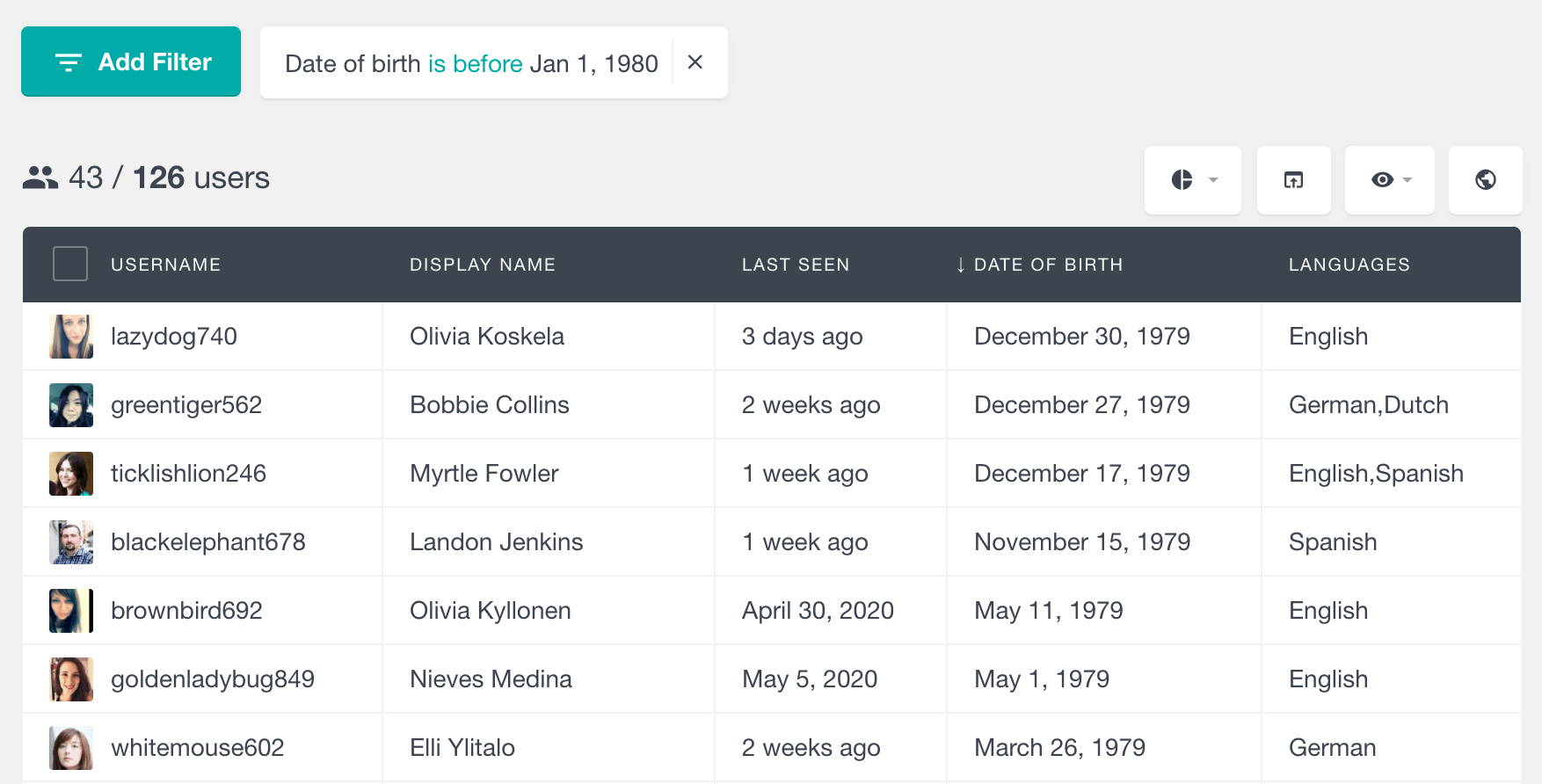
Text and other type of fields
The rest of the Gravity Form field types, such as Text, E-mail or Phone fields are detected as text fields. The values of these fields are listed just in the format in which they are saved and you can sort the user table based on any of these fields in an alphabetical order. You can also apply various text search operators, such as “contains” or “starts with” to find all the users that fulfill a certain criteria.
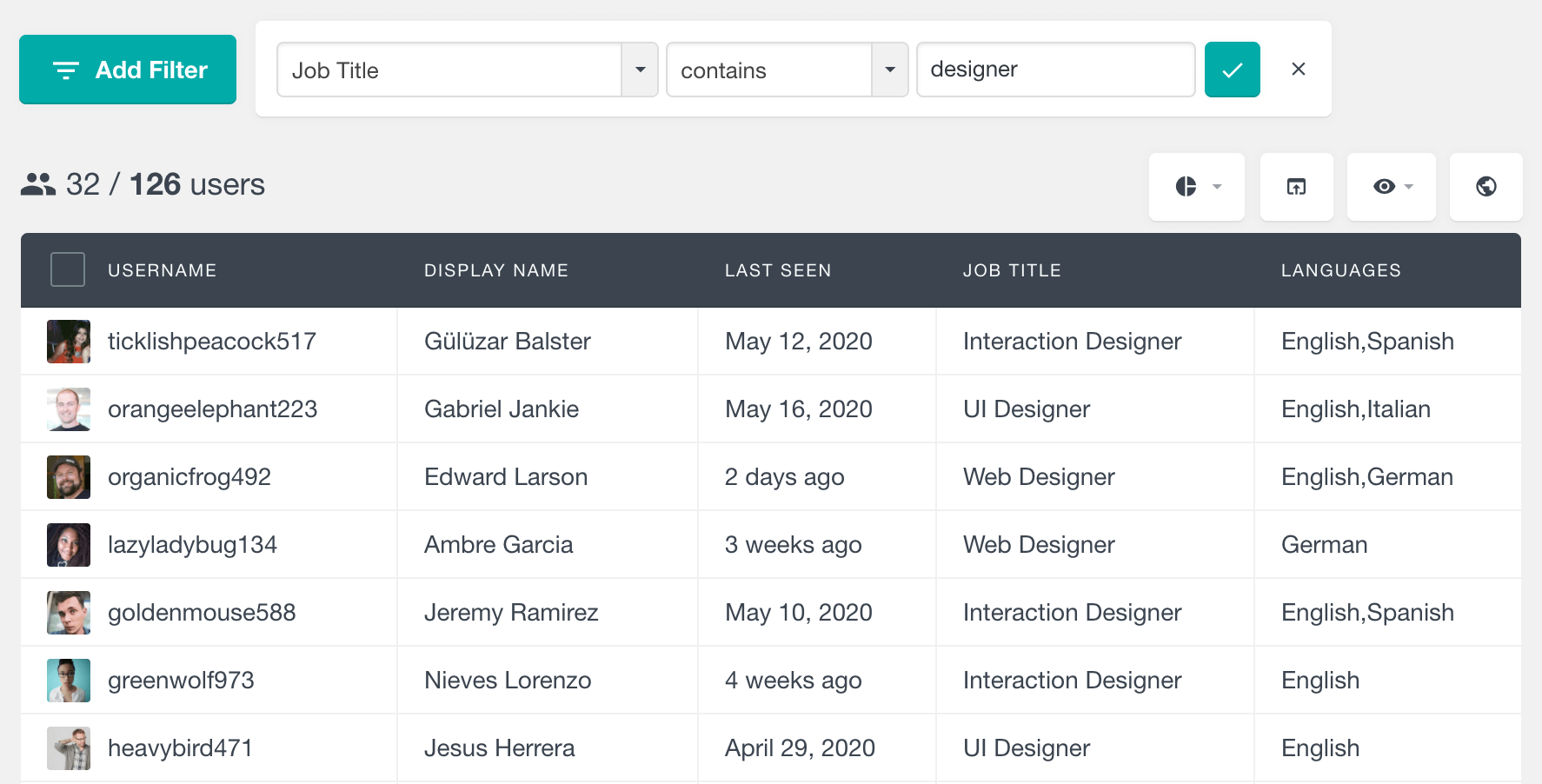
Listing the Gravity Forms User Data in the user profile section
The user profile section of Users Insights is the single place that collects all the available user data from different modules, plugins and elements, neatly organised to give you insights about each user’s data and activity. Besides the Users Insights user table, all of the custom user fields registered with the Gravity Forms User Registration Add-on, are also available in the Users Insights user profile section. This makes it easy for you to review all of the stored Gravity Forms user data, as well as view the additional user data, such as the user location or user activity.
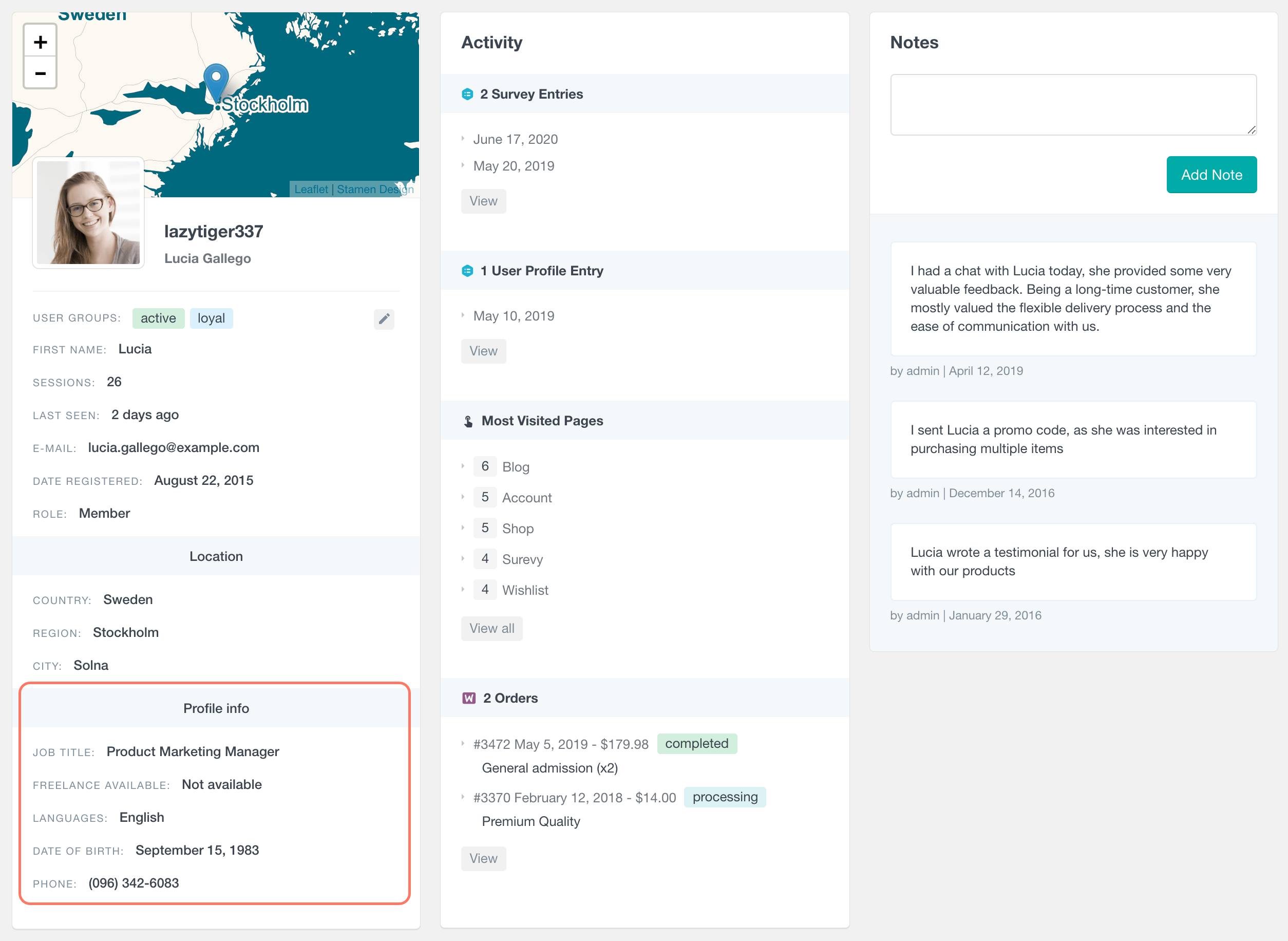
2. General Gravity Forms Support
If you have Gravity Forms forms that are submitted by your WordPress users, you might also want to have an insight on how they interact with the forms. The Gravity Forms module of Users Insights can give you the information about who has or hasn’t submitted a certain form and also can provide you a detailed list with the form submissions for each WordPress user.
Filtering users by their form entries
In Users Insights 3.9 we have introduced a new advanced filter that allows you to filter your users based on the data submitted in their forms. This feature requires Gravity Forms 2.3 or newer.
This filter can be activated separately for each form from the Users Insights -> Module Options -> Gravity Forms -> Settings section:
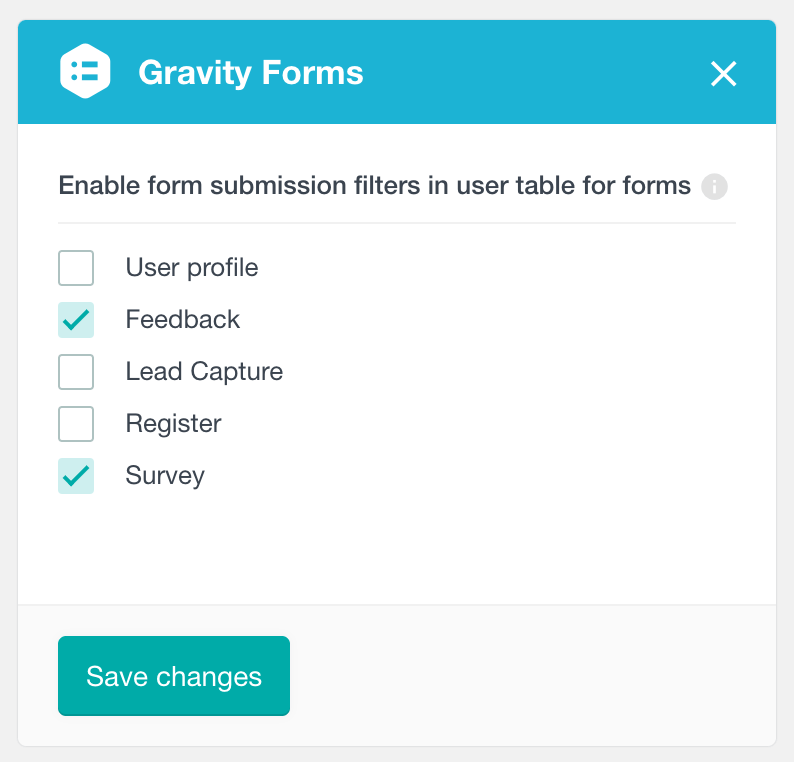
For each form that is enabled in this section, you will see a filter called “Has submitted form [name]”. With the example above, there will be a “Has submitted form Feedback” and “Has submitted form Survey” filters available. Once you select this filter, you will see the options to filter your users based on the different form entry values.

You can combine the conditions in any way and add as many conditions as you like:
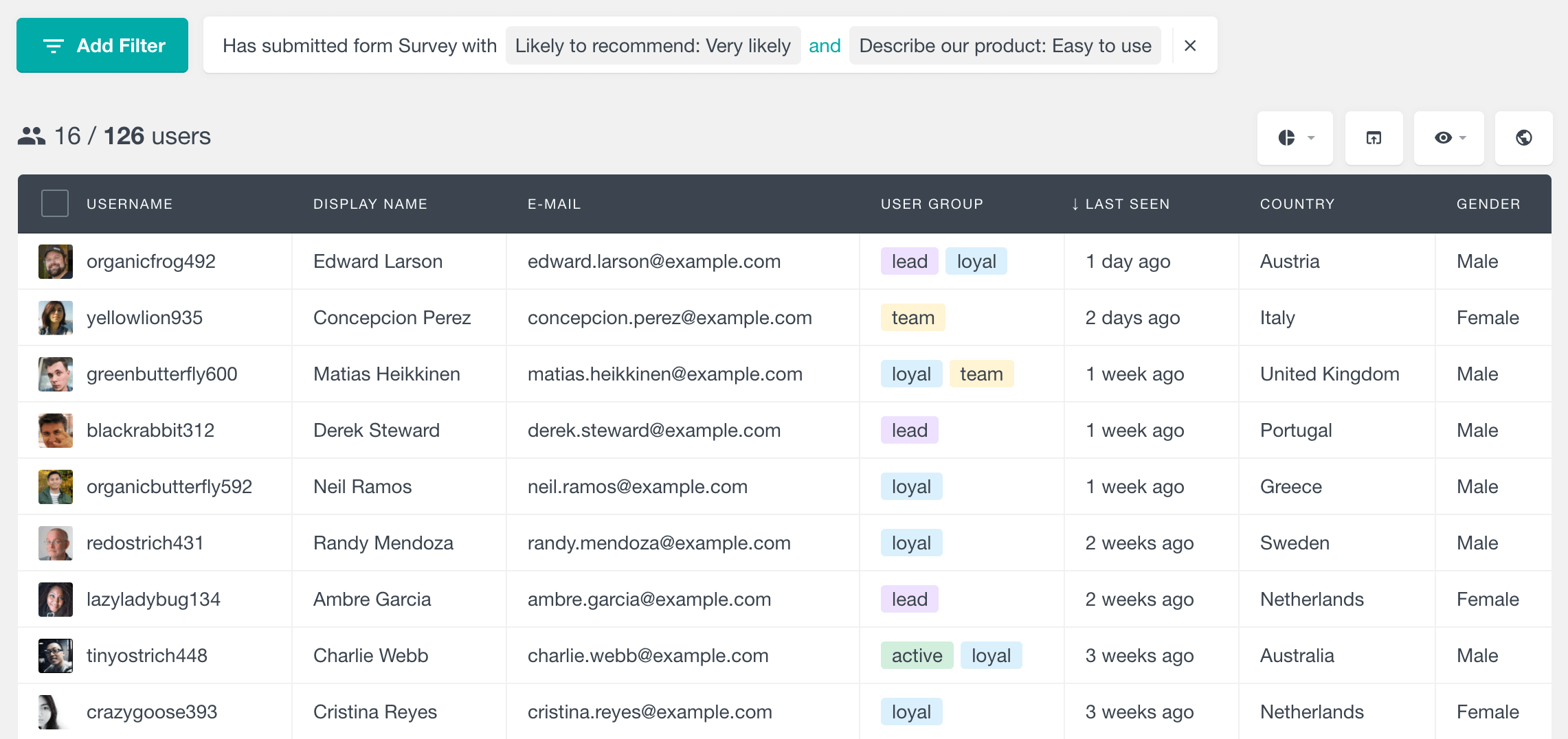
In order for a user to be displayed in the results, they must have submitted a form entry that meets all of the conditions in the filter. Therefore if, for example, the user has one entry that meets the first condition (but not the second one) and another entry that meets the second condition (but not the first one), they will not be listed in the results.
The following field types are supported in this section:
Numeric fields
With numeric fields you can apply a filter based on a range of values (inclusive). Either side of the range is optional, which means that you can only set a minimum or maximum value if you like:

The following Gravity Forms numeric field types are supported:
- Number
- Quantity
- Total
Option fields
With the option fields the filter will provide a list with the field options to choose from.

The following field types are supported as option fields:
- Drop down
- Radio buttons
- Checkboxes
Date fields
Date fields are similar to the numeric fields, in the way that they allow you to set a date range (inclusive) to your condition. Similarly, you can optionally omit the start or end date of the range:

Text based fields
With text fields you can search the user form entries based on a “text contains” value.

The following Gravity Forms field types are detected as text fields:
- Single line text
- Paragraph text
- Phone
- Multi select
Submission date
Besides the form fields, this filter also supports a “Submission date” option, allowing you to further filter the users based on their form entry submission dates. When used by itself you can see the users who have submitted the particular form within the specified period:

But of course you can also combine this condition with any of the other available conditions for this form. For example, the following filter will show us all of the users who have submitted the “Survey” form in 2019 and who have selected the “Very likely” option in the product recommendation field.
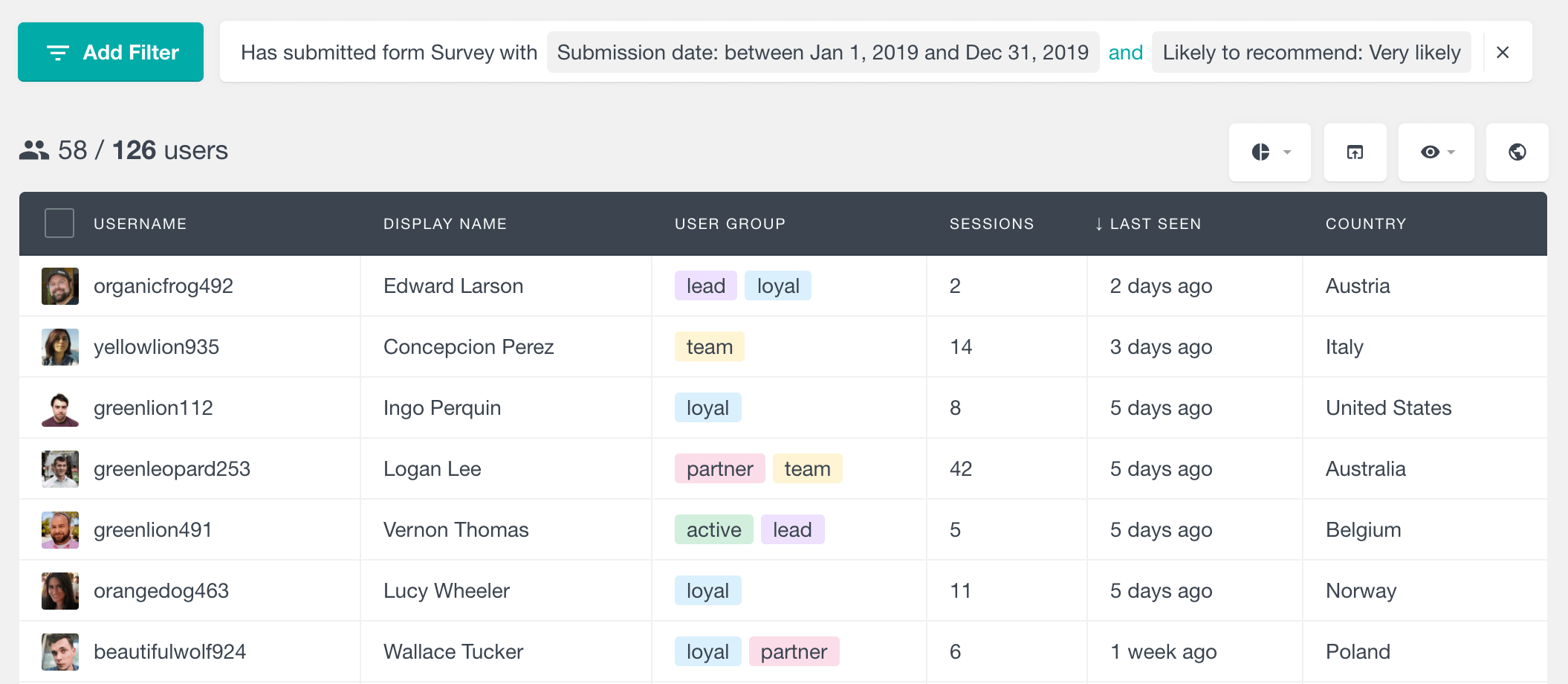
Basic form submission filters
Users Insights also provides two additional more basic form submission filters – “Has submitted form” and “Has not submitted form”. As their names suggest, when using the “Has submitted form” form filter, you can list all the WordPress users that have submitted a certain Gravity Form. On the other hand, the “Has not submitted” form filter lists all the WordPress users that haven’t submitted a particular form.
The main advantages of using these filters over the above-mentioned advanced filter is:
- All of the existing forms are available to choose from – regardless of whether they are enabled for advanced filtering
- There is a negative option – “Has not submitted form” allowing to find all users who have not submitted the selected form
Here is an example where we have filtered the WordPress user list, showing only the ones who have completed our “Survey” form.
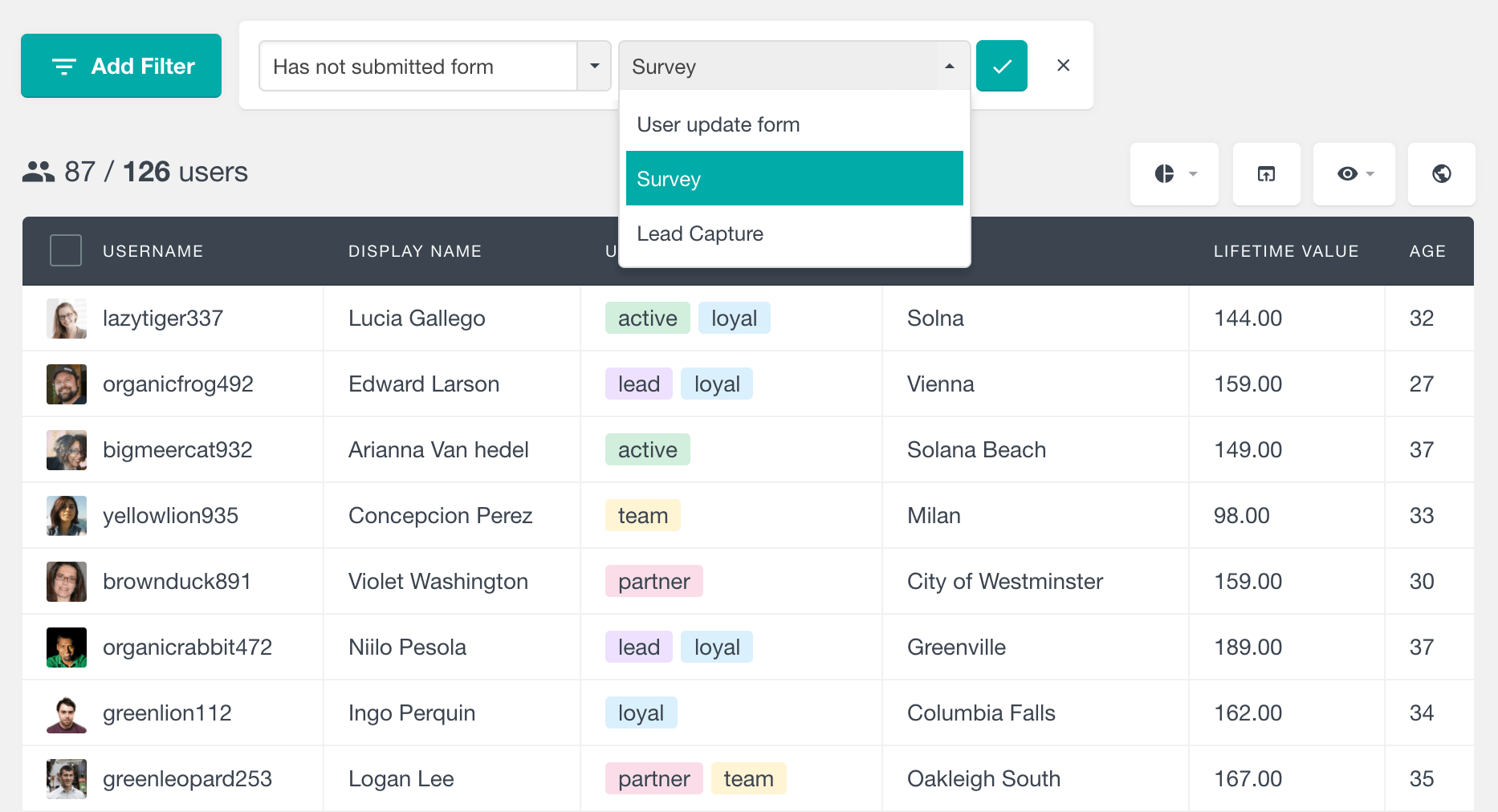
In this way, if for example you have a form that is very important to be submitted by all users, you can find all the users that haven’t submitted this form and export their e-mails in a CSV format by using the Users Insights export feature. Then you can use your favourite e-mail marketing tool to import the users in CSV format and send emails to those users to remind them about the form.
Listing form submissions for each user
In addition to the form filters, you can also see a detailed list of all form submissions for each user in the Users Insights user profile section. The submissions are listed separately for each form – the list includes the most recent submissions with a link to the Gravity Forms page where you can review the full list of submissions for the user. Each entry is represented by the date it was submitted and also includes a link to the detailed Gravity Forms entry page.
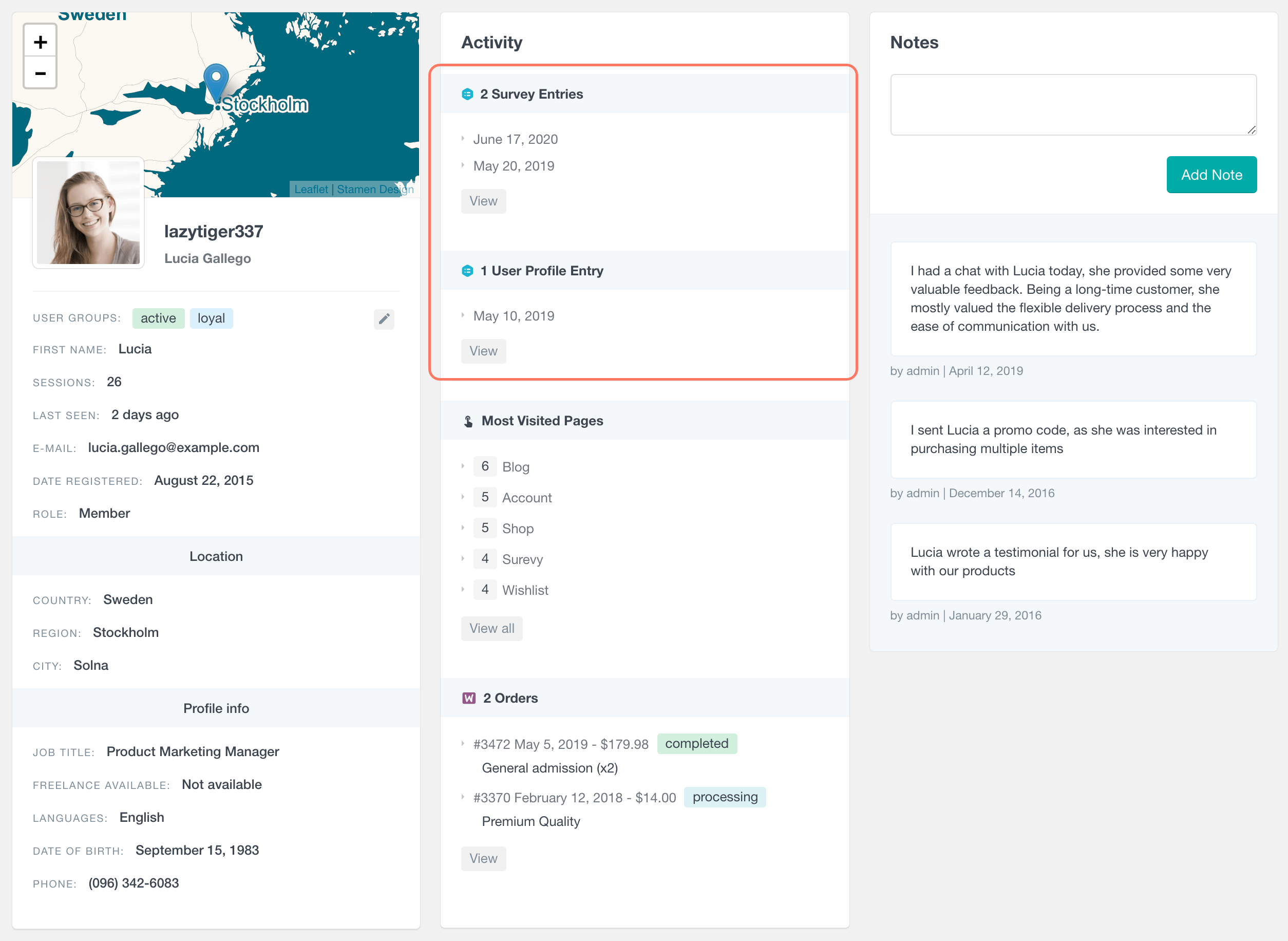
Combining the Gravity Forms features with the rest of the Users Insights features
Users Insights provides many additional features – from various 3rd party plugins support to custom Users Insights specific features, that help you better organise and manage your WordPress users. The plugin is modular, which means that all the main features are available as separate modules, which can be optionally enabled or disabled. Moreover, you can customise the Users Insights user table, so it shows only the user fields that you need and in the order that you specify.
When using the Gravity Forms module of Users Insights, you are not limited to the features that this module provides – you can use the Gravity Forms features in a combination with all the existing Users Insights modules and features. For example, you can use the Geolocation feature to find out more about your users’ locations. Or you could use the Groups feature to create custom user groups and assign them to your users. Additionally, if you are using any of the supported 3-rd party plugins, such as WooCommerce or Ultimate Member, you can combine the data that they generate with your Gravity Forms user data and use all the available user filters.
Exporting the Gravity Forms User Data
Another useful feature of Users Insights that you can use in combination with the Gravity Forms module is the Export feature. The Export feature lets you create a customised user data export in a CSV format. With this feature you can export the data just in the way it is presented on WordPress user the table, including all of the applied filters, visible columns and sorting options.
This feature can be very useful to export a customised user list to your favourite email marketing tool (such as export to Mailchimp), build custom reports or just to have it for a future reference.
If, for example, we apply a few different filters to find the users from United States, with Job Title as designer (from the User Registration addon) and only those that haven’t submitted a particular form, we could use the following filters:
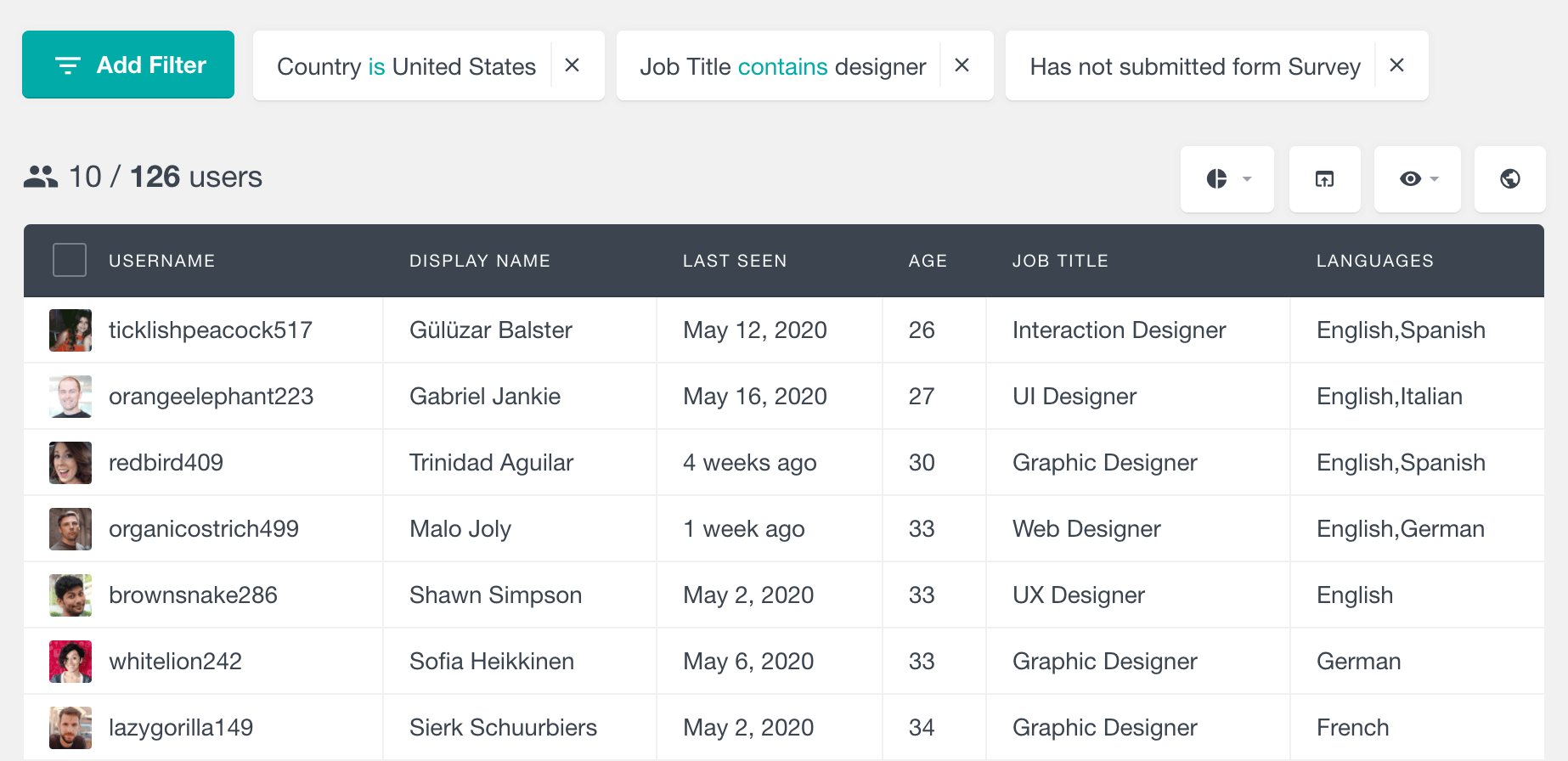
And if we want to export this current selection, we just need to click on the Export button that will export all these users in a CSV format:

Gravity Forms Reports
If you need to analyze your Gravity Forms user data further, you can also use the Gravity Forms Reports feature. The reports create various charts to visualize the gravity forms entries data – both for user and non-user submissions:
Conclusion
Whether you use the Gravity Forms User Registration Add-on to register and save custom user data, or just the Gravity Forms plugin by itself, if you have registered WordPress users that interact with these forms, you will always need a way to manage this data so you can know more about the WordPress user activity on your site. Users Insights can give you the tools to analyze, search and filter your user data and their related Gravity Forms activity.

